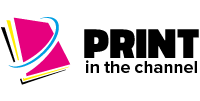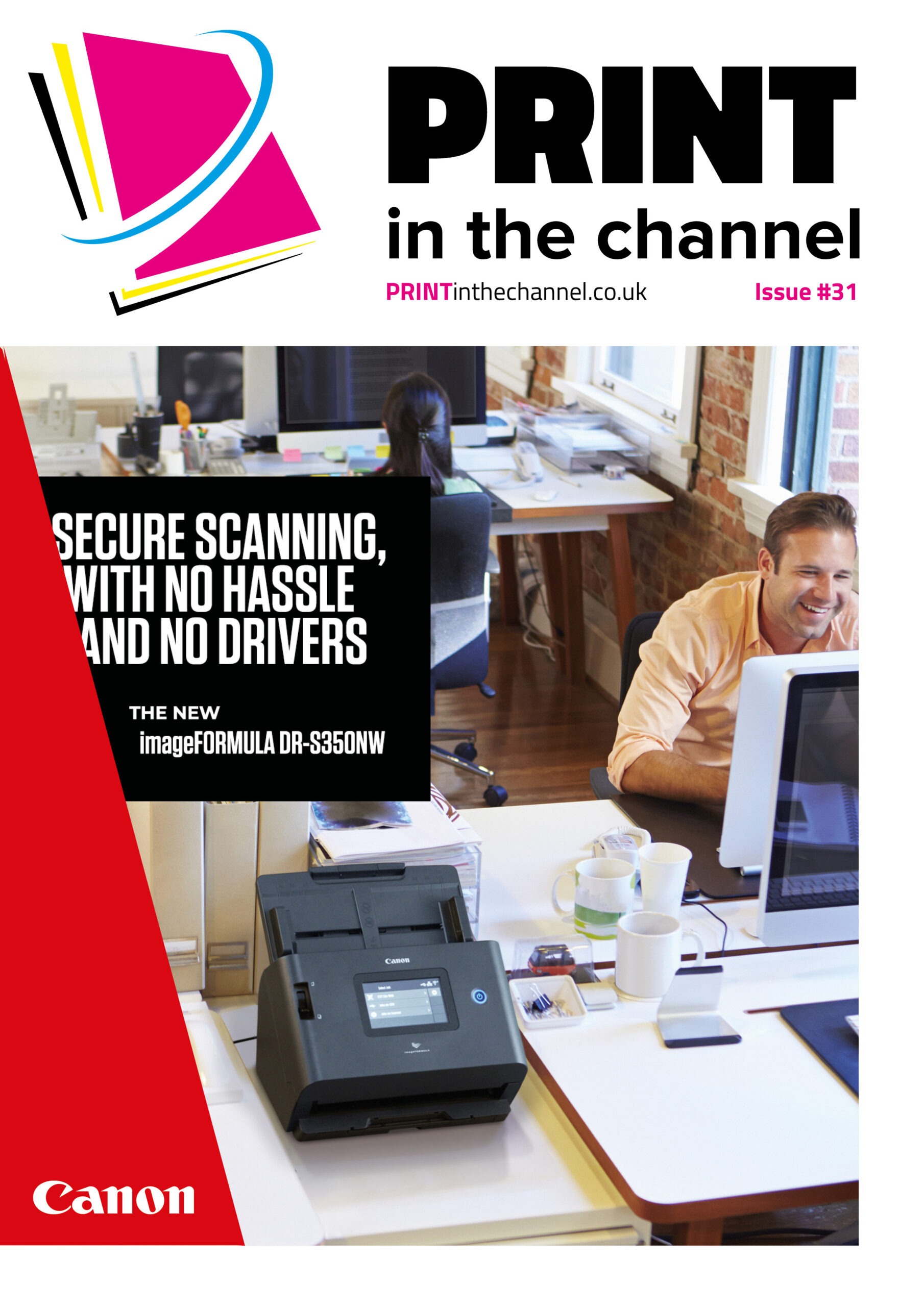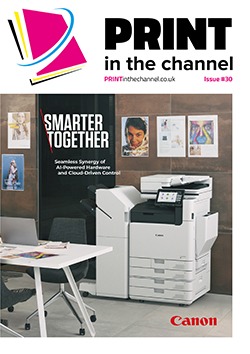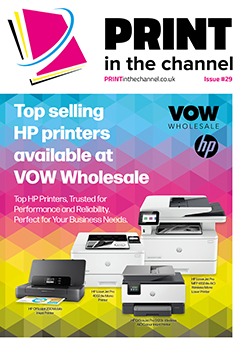Managed print services continue to grow in popularity in a range of sectors, but a key concern is ensuring that it is kept secure. With networked print devices increasing the number of points for attack for cyber criminals security is paramount. Resellers have a key role in ensuring that MPS is kept secure.
In the government’s Cyber security breaches survey 2024, it was found that 50% of businesses reported having experienced some form of cyber security breach or attack in the past 12 months. The percentage of businesses suffering a breach or attack was much higher for medium businesses (70%) and large businesses (74%).
This shows how prevalent cyberthreats are now to businesses. With increasing numbers of printers being networked, they are also targets, which needs to be considered when managed print services (MPS) deals are being put together.
“MPS are becoming increasingly popular across various sectors due to their efficiency and cost-effectiveness,” says Graham Foxwell, product marketing lead, Kyocera Document Solutions UK. “However, with the rise of networked print devices, the security of these systems has become a critical concern. As cyber threats continue to evolve, ensuring the security of MPS is paramount. There are some common threats, strategies for protection resellers need to promote, to maintain secure MPS environments.”
Growing threats
The number of cyberthreats are increasing. “The number of threats on every level is growing,” says Ian Fox, channel solutions and services specialist at Xerox. “The widespread adoption of AI and increased computing power is sure to see this rise.
“The hacking community is highly resourceful and looking for the weakest link in the chain. If an MPS fleet uses default passwords, poorly patched print servers, or out-of-date print management solutions, it leaves the fleet vulnerable to attack.”
Deyon Antoine, product marketing manager at Toshiba Tec, agrees that the number of cyberthreats targeting MPS is growing. “As printers and multifunction devices become more integrated into network environments and smart, they present attractive targets for cybercriminals to commit malicious acts,” he says. “And with the advancement of AI these attacks are becoming more and more sophisticated.
“When we talk about an organisation’s MPS network, we also must include those devices which support employees who either work from home or who are mobile as these can be seen as major weak points.”
Stuart Miller, director UK&I Canon Channel Partners, notes that cyberthreats have continued to increase alongside the vulnerabilities that come with complex hybrid working environments. “With 19% of IT decision makers (ITDMs) still admitting they don’t know where data is stored across virtual locations, according to research by Canon Europe, it is no surprise that MPS remain a key target for cybercriminals,” he says. “A common pitfall is that many businesses still rely on outdated legacy systems, which pose serious threats to sensitive information.”
Common threats
Ian notes that one of the most common threats to business is from cyber attackers looking to exfiltrate data or deny access to key systems. “Reasons for this may include seeking revenge or pursuing financial, political or competitive advantages,” he says. “Hackers will try any feasible entry route, including MPS setups. Systems may be scanned for unpatched software, known vulnerabilities, weak or default passwords. Many attacks are multi-staged; extracting data from one system – such as a valid username and password – may then allow escalated access to more valuable data and systems.”
Graham adds that the most prevalent cyberthreats to MPS setups include unauthorised access, data interception, misconfiguration and malware attacks. “Networked printers can be exploited as entry points for cybercriminals to access sensitive information or launch broader network attacks,” he says. “Additionally, unencrypted data transmissions between devices and servers can be intercepted, leading to data breaches.
“There is also the growing number of threats as more devices become interconnected, and therefore the attack surface expands, providing more opportunities for cybercriminals. The increasing sophistication of cyberattacks also means that traditional security measures may no longer be sufficient.”
Deyon adds that it should be remembered that cyberthreats include any malicious act that targets to harm, compromise, or exploit digital information, networks or systems. “There are several types of cyberthreats that can pose risk to individuals and businesses [and] that could potentially be launched on a printer network like malware, internal threats and Man-in-the-middle attacks. Man-in-the-middle attacks or data interception allows cyber criminals to intercept communications between devices to steal or manipulate data.”
Keeping MPS secure
But while the threats are numerous, so are the ways to keep MPS fleets secure, which resellers should be across.
“Firstly, it is critical that IT leaders focus on mastering the basics and maintaining robust cyber hygiene across the workforce,” says Stuart. “For example, regularly updating software, isolating printers from open networks and using different authentication methods for different types of data will help protect sensitive information from criminals and prevent them from redirecting the print route to their own devices.
“Partnering with a trusted MPS provider that offers end-to-end document management processes is crucial when it comes to security. Canon’s five-step approach to MPS reflects this, with each digital transformation journey tailored to the customer’s unique vulnerabilities and pain points. By first assessing the document workflow, Canon designs a bespoke roadmap to ensure a seamless transition to our MPS solutions. Constant improvements are then made to ensure the workflow is adaptive to the business’s changing needs.
“Canon’s cloud-based software, UniFLOW Online, forms a key part of our MPS offering. Designed to address the unique threats of hybrid working, UniFLOW Online operates under a zero trust infrastructure, providing the flexibility of an MPS solution, as well as the assurance and compliance of a security software.”
Graham says strategies for keeping MPS secure include regularly updating firmware and software to patch vulnerabilities, checking configuration of devices aligns with required use case, encrypting data both in transit and at rest and monitoring network activity for unusual behaviour that could indicate a breach.”
Deyon agrees that there are multiple considerations for keeping MPS secure. “For instance, printer hardware should be updated to the latest version, as some older CPU’s may not be able to support patches for new vulnerabilities.”
He adds that it should also be ensured that devices are configured for optimum security protection and adhere to a robust IT policy. “Employ a zero trust policy with controls, by using user-authentication, like access cards, PINs or even biometrics to restrict access,” he says.
“Use cloud software that introduces its own print security like Toshiba’s e-FOLLOW.cloud and e-BRIDGE Global Print with print release for-your-eyes only printing.
“If possible, use print devices from a single vendor as multi-vendor environments can be more difficult to manage and keep secure.”
Ian says that best practice security strategies should be used to reduce the attack surface. “This includes updating and patching solution software and device firmware, using strong passwords with a regular change policy, disabling unused ports, and implementing policies and procedures to audit and remediate potential weaknesses,” he says.
“Xerox’s Cloud Fleet Management solution provides an effective way to manage MPS fleets, ensuring devices stay updated and compliant with organisational security policies, allowing patch, password and configuration management and audits from a single dashboard.”
Reseller conversations
When discussing MPS security with customers, there are several factors that resellers should be highlighting.
Stuart notes that 50% of ITDMs reported ‘managing information security’ as their most time-consuming task in Canon Europe’s report ‘What does information management look like on the front line?’. “Resellers can help businesses invest in the right MPS solutions by underscoring the importance of features such as Multi-Factor Authorisation (MFA) and zero trust infrastructure,” he says. “On top of this, resellers should become well-versed when advising customers on cyber hygiene best practice.”
Deyon says that resellers can help customers understand the critical aspects of MPS security and the steps needed to protect their print environments effectively to ensure comprehensive protection and peace of mind.
This includes emphasising things like device security. “The importance of securing print devices against unauthorised access. By implementing strong passwords, performing regular firmware updates, and disabling unused ports and protocols,” he says.
“Likewise data protection, such as the need for encrypting data both end-to-end and in storage whether that be cloud repositories or a HDD/SSD. This helps prevent data interception and unauthorised access to sensitive information.
“Also network segmentation and firewalls protect MPS devices from other network threats.
“User authentication, such as implementing user authentication methods, such as PIN codes, biometrics or card readers, to control access device functions should also be discussed, as should the need for continuous monitoring and management to detect and respond to potential security incidents.”
Education is also important, adds Deyon. “Address the need to comply with relevant data protection regulations, such as GDPR and company IT policies demonstrate how a MPS can help meet these requirements,” he says. “And the importance of educating employees about cybersecurity best practices including recognising phishing attempts, and handling sensitive documents securely.”
Ian agrees that education is important. “Hardware and software that make up an MPS solution shouldn’t be treated any differently to any other endpoint on the network,” he says. “They carry similar risks as an entry or exit point for those with ill intentions. For instance, early in 2023, a widely used print management solution faced a widespread attack due to two vulnerabilities in its software. These unprotected systems, accessible via the internet, became prime targets for ransomware attacks. Raising awareness of such vulnerabilities is important and helps avoid the ‘it won’t happen to me mentality’ and our Xerox partners can offer effective solutions to help minimise the risk.“
Graham adds that when discussing MPS security with customers, Kyocera resellers should emphasise comprehensive security solutions. “Highlighting the benefits of Kyocera Cloud Print and Scan, which offers secure cloud-based printing and scanning services, is crucial,” he says. “Resellers should also discuss the need for regular security assessments and advanced threat detection systems.”
Developing market
The MPS security market will continue to develop over 2025 and beyond, as the threats will too.
Ian says that the growing awareness of potential risks will boost demand for cloud-based solutions with enhanced endpoint security. “Data privacy and compliance will drive features, while the need for managed security services will rise,” he says. “These trends will shape a dynamic, evolving market focused on advanced threat detection and response.”
Stuart adds that the demand for secure, document-centric software will grow in 2025 as businesses continue to adapt to dispersed working environments. “Cloud-based solutions will be a crucial link, bridging the gap between digital and print workflows and providing increased visibility for IT leaders as they manage remote workflows,” he says.
“The emergence of AI will continue to transform the cybersecurity landscape this year, creating challenges and opportunities for enterprise security. MPS solutions that adapt to this technology while prioritising security and agility will drive the next era in document management.”
Graham agrees that the advancements in AI and machine learning will enhance threat detection and response capabilities. “This will make MPS environments more resilient against cyberthreats,” he says. “As organisations become more aware of the risks, the demand for robust MPS security solutions will likely increase, driving innovation and investment in this critical area.
“By staying informed and proactive, organisations and resellers can ensure that MPS remains a secure and reliable component of their IT infrastructure.”
Deyon adds that MPS security from a vendor perspective we will see a rise in integration of AI and machine learning to help identify cyberthreats, more adoption of zero trust architecture, and multi-layered security approaches that encompasses hardware, software and workflow security. “We will also see more implementation of Single-Sign-On and MFA for software solutions,” he says.










